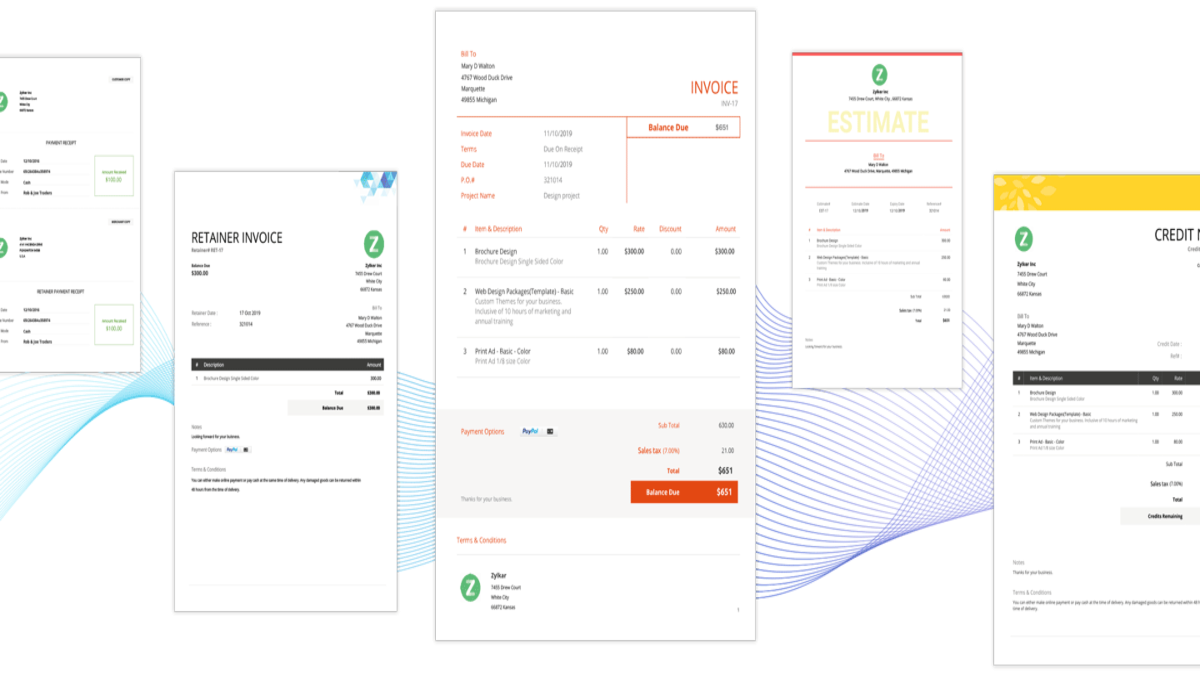Business
How To Draw Woody

How To Draw Woody. The Toy Story film series is one of the most beloved franchises ever created. There are four films in the main series, as well as countless TV shows, video games, books, and other merchandise centered around these characters. One of the main characters is the toy cowboy Woody. Fans love this character because of his sarcastic yet honorable nature, and his journey to learning to be less jealous and trust his friends has captivated audiences.
Learning to tighten Woody is a fantastic way to honor this classic symbol! If you like this character, there will be much to like in this walkthrough. Our step-by-step guide on drawing Woody in just six steps will show you how to easily recreate this famous cowboy toy. You can draw many more characters like bow and arrow drawing, Anubis drawing, cat drawing, cobra drawing, blueberry drawing, coconut drawing and many more kids drawing.
Step 1:
In this first step of our guide on how to draw Woody, you will start drawing by drawing his head. Woody’s head is rather thin and long, so you can begin by removing a rounded line to create this form as it appears in the reference picture. Next, draw a smaller curved line for the base of her neck below her.
Next, draw her ears to the side with a few curved lines for the hair on the sides. Woody is almost always seen wearing his famous cowboy hat, so we’ll also start drawing that. Draw a rounded line on top of his head, then add another above for the top of the hat. Once you have drawn all these aspects, you are ready for step 2.
Step 2:
To continue your Woody drawing, we will draw his features and chest next. For the facial features, we’ll begin with his looks. Its watches are round in form with large circular students inside. His eyelids will also be slightly lower for his facial expression. Then you can draw her eyebrows using simple shapes and draw her smiling nose and mouth below.
Next, we will draw his chest. Woody wears a cowhide vest and has his star-shaped sheriff’s badge on top. Next, pull the buttons of his shirt between the vest, add his scarf, then pull his belt. Finish by drawing the holster for the gun on the left side of his waist; then, it’s time to move on to step 3.
Step 3:
In this guide on how to draw Woody, we will portray him in a dynamic running pose. To start we’ll start by drawing his arms. His arms are made of padded fabric, so they’ll swing wildly as he runs. Use curved lines to represent his arms, with the left angled downward. The one on the right will lift a bit, and we’ll get a better look at the hand on that arm. Again, remove the rounded rectangular provinces of her sleeves onto her wrist! That’s all for now, so now you can move on.
Step 4:
Like his arms, Woody’s legs are made of soft, plush fabric. As we draw them, they will wave in the same way as the arms. The leg on the left side will be more refined and extended further along than the different. This other leg will be more bent and help show that you are halfway there. You can also start drawing the top edges and the first sections of his boots under his legs. We’ll leave the boot soles raw for now, but you’ll finish them with the final details in the next step.
Step 5:
In our guide on drawing Woody, this step will be to finish up the final elements and details. To start, we’ll draw the soles of his boots. For the boot on the left, we will see a little of the bottom of the shoe, while for the other, we will only see the top. You can finish the boots by drawing the stirrups attached to the back of the boots. You can complete the setup by counting the plaid pattern on his shirt. Once it’s drawn, you can also add your ideas! You could draw a background to show your favorite movie scene or add some characters.
Also Read: By 2023, GitHub users will have to utilise two-factor authentication.
Business
Mueller Settlement Amazon: Navigating the Legal Landscape

Learn more about the intricacies of the Mueller Settlement Amazon, the consequences for Amazon legally and how it affected the company’s image. Discover the background, the thoughts of experts, and the steps Amazon took to win back customer confidence. Learn all about this retail giant’s struggles, triumphs, and plans for the future.
Introduction
Much attention has been focused on the Mueller settlement with Amazon in the intricate e-commerce industry. This article examines the origins, legal ramifications, and influence on Amazon’s reputation of this deal, among other complexities.
Understanding Mueller Investigation
What is Mueller Settlement Amazon?
A number of Amazon’s business activities were the subject of the inquiry that led to the Mueller settlement. To fully realise the implications of the settlement, it is vital to understand where this inquiry came from.
Significance of the Settlement
Understanding the settlement’s utmost significance in the business realm requires delving into the conclusions of the Mueller investigation and Amazon’s participation.
Legal Implications
Mueller Report Overview
A synopsis of the Mueller report explains the complex legal landscape that Amazon faced. To grasp the seriousness of the settlement, it is necessary to unravel the main conclusions and what they mean.
Amazon’s Legal Responses
In responding to the claims made in the Mueller report, Amazon’s legal staff was helpful. In this part, we will take a look at the methods Amazon used to protect its interests.
Settlement Details
Terms and Conditions
To further understand what Amazon was required to do, it is helpful to review the settlement agreement’s terms and conditions. Understanding the breadth of the settlement requires uncovering the financial ramifications for Amazon.
Impact on Amazon’s Reputation
Public Perception
Public opinion may have just as much of an effect as a court of law. It is instructive to compare popular opinion of Amazon before, during, and after the settlement.
Media Coverage
The media’s coverage of the Mueller settlement was essential in establishing its narrative. The impact on Amazon’s reputation as a result of the media attention is examined in this section.
Amazon’s Response Strategy
Communication Tactics
It takes finesse to communicate at a settlement. To make sense of what happened next, you had to know how Amazon strategically conveyed its position.
Changes Post Settlement
After the payment, Amazon made certain adjustments to fix its reputation. Taking a look at these adjustments shows how seriously the organisation takes the idea of learning from the mistake.
Lessons Learned
Corporate Responsibility
Many people started talking about corporate accountability after the Mueller deal. In this part, we’ll look at what other companies, including Amazon, have learnt.
Future Implications for Companies
Companies may learn a lot about how to deal with future problems like this by looking at the bigger picture of how the settlement affected their actions.
Expert Opinions
Legal Experts’ Take
Views on the Mueller settlement were expressed by legal professionals. Gaining insight into their viewpoints enriches the examination.
Business Analysts’ Perspectives
Analysts from the business world provide light on the potential financial consequences. Gaining insight into their viewpoints allows for a more complete picture to be painted.
Mueller Settlement Amazon: A Timeline
Key Events
To make sense of what’s happening, it’s helpful to go over the major points of the Mueller deal in chronological order.
Milestones in the Settlement
Readers may easily follow the events that had place by locating key points in the settlement chronology.
Consumer Trust Regained
Measures Taken by Amazon
Amazon did some things to win back the confidence of its customers. By breaking down these steps, we can see how seriously the business takes its consumers’ needs.
Customer Feedback
It is critical to pay close attention to what customers have to say. To gauge the success of Amazon’s campaigns, it is helpful to examine consumer comments made after the settlement.
Positive Outcomes
Changes in Corporate Practices
As a result of the Mueller settlement, Amazon revised and updated certain of its business policies. Looking at these developments highlights the benefits of the settlement.
Industry-wide Impact
Beyond Amazon, the settlement’s effects were felt. The effects of the settlement on the industry as a whole are discussed in this section.
Challenges Faced
Internal Struggles
Both during and after the settlement, Amazon encountered difficulties internally. The larger story gains depth from an appreciation of these challenges.
External Backlash
Amazon faced criticism from other sources. Managing a company’s reputation after a settlement is complicated, but it becomes clearer when you look at the external issues.
Success Stories Post Settlement
Amazon’s Growth
The fact that Amazon has continued to grow since the settlement shows how resilient the corporation is. A positive outlook might be gained by delving into this growth tale.
Positive Repercussions
One way to look at the bright side of things is to consider the good things that have come out of the settlement.
The Future of Amazon
Sustainability Efforts
After the settlement, Amazon made sustainability an even bigger priority. By delving into these initiatives, we can better understand the firm’s dedication to ethical business practices.
Ongoing Commitment
The commitment of Amazon to learning from the settlement and making wise adjustments will determine its future.
Conclusion
Last but not least, the path to a Mueller deal with Amazon has been one of profound change. To better overcome obstacles, organisations would do well to understand the legal, reputational, and operational ramifications.
FAQs
Is the Mueller settlement a setback for Amazon’s growth?
Amazon overcame obstacles presented by the settlement and continued to develop as a result.
How did the public react to the settlement?
Both proponents and detractors of the idea voiced differing views in response to the public outcry.
Were there long-term consequences for Amazon?
Improvements in corporate responsibility and shifts in business practices were among the long-term effects.
Business
10 Top Photo Tiles, Wall Art, and Canvas Prints Companies

Introduction
In today’s digital age, we capture countless moments with our cameras and smartphones, but often these memories remain trapped in the digital realm. Fortunately, there are companies that specialize in turning your cherished photos into stunning pieces of art that you can proudly display in your home. From photo tiles to canvas prints, these companies offer a wide range of options to transform your memories into beautiful decor. In this article, we’ll explore the top 10 companies that excel in this field, with special mention to Wallpics, a standout choice.
-
Shutterfly
Shutterfly has long been a household name in the world of personalized photo products. They offer an array of options, including canvas prints, framed prints, and acrylic prints, allowing you to transform your photos into elegant wall art. Shutterfly’s user-friendly website and customization tools make it easy to create personalized pieces that suit your style.
-
CanvasPop
CanvasPop is known for its high-quality canvas prints. They use premium materials and advanced printing techniques to ensure your photos are reproduced with vivid colors and sharp details. CanvasPop offers a range of customization options, allowing you to choose the perfect size and frame to match your decor.
-
Mixtiles
Mixtiles specializes in photo tiles, making it easy to create a unique wall display. Their peel-and-stick tiles are not only convenient to install but also offer a modern and sleek look. You can rearrange them easily, ensuring your wall art is always fresh and appealing.
-
Printique
Formerly known as AdoramaPix, Printique is a trusted name in the world of photography. They offer a variety of printing options, including canvas prints and metal prints, all of which are known for their exceptional quality. With Printique, you can be confident that your photos will be turned into beautiful works of art.
-
Easy Canvas Prints
As the name suggests, Easy Canvas Prints makes the process of creating canvas prints a breeze. Their user-friendly website guides you through the customization process, allowing you to choose from various sizes, frames, and even image enhancements. The result is stunning canvas art that’s delivered to your doorstep.
-
CanvasDiscount
CanvasDiscount is known for its affordable canvas prints without compromising on quality. They frequently run promotions and offer competitive pricing, making it a budget-friendly option for transforming your photos into canvas art. Despite the lower prices, the quality of their prints remains impressive.
-
Nations Photo Lab
Nations Photo Lab is a professional-grade photo printing service that offers a wide range of products, including canvas prints and metal prints. They are known for their attention to detail and color accuracy, ensuring your photos are faithfully reproduced. Nations Photo Lab is a popular choice among photographers and art enthusiasts.
-
Great Big Canvas
Great Big Canvas specializes in large-format art prints that can make a bold statement in your home. Their collection includes a wide range of styles, from contemporary to classic, ensuring there’s something for everyone. Whether you want to showcase your own photos or explore their vast library of artwork, Great Big Canvas has you covered.
-
Fracture
Fracture takes a unique approach to photo printing by directly printing your images on glass. The result is a sleek and modern look that enhances the vibrancy of your photos. Their minimalist design and easy-to-hang system make it simple to transform your photos into eye-catching wall art.
-
Wallpics
Last but not least, Wallpics deserves a special mention on this list. Wallpics offers a distinctive and creative way to display your photos as wall art. They specialize in photo tiles that can be easily arranged and rearranged on your wall. With Wallpics, you have the flexibility to create your own unique photo collages and arrangements, adding a personal touch to your decor.
Conclusion
Turning your favorite photos into beautiful wall art has never been easier, thanks to the top-notch companies mentioned in this article. From canvas prints to photo tiles, these companies offer a variety of options to suit your style and budget. Whether you’re looking for professional-grade quality or a budget-friendly solution, you can trust these companies to transform your cherished memories into stunning pieces of art. And with Wallpics’ creative approach to photo tiles, you have the freedom to design your own unique wall display that tells your story in a truly personalized way. So, don’t let your precious memories stay hidden on your devices; turn them into beautiful art pieces that you can enjoy every day.
Business
Top 8 Invoice Generator Software for Freelancers, Small Businesses, and Professional Contractors

Introduction:
In today’s rapidly evolving business world, the demand for efficient tools to manage financial transactions and streamline operations has never been greater. Freelancers, small businesses, and professional contractors all require effective invoice generator software to create professional invoices and ensure timely payments. In this article, we present a new list of the top 8 invoice generator software solutions, with a focus on Zintego, an innovative invoicing tool that can revolutionize your billing process.
-
QuickBooks Online:
QuickBooks Online by Intuit is a highly popular cloud-based accounting software suitable for freelancers and small businesses. It offers a robust invoicing module with customizable templates, expense tracking, and online payment capabilities. QuickBooks Online also integrates seamlessly with various third-party applications.
-
Xero:
Xero is another cloud-based accounting software that excels in invoicing. It provides customizable invoices, expense management, and multi-currency support. Xero’s intuitive interface and automation features make it an excellent choice for small businesses and professional contractors.
-
FreshBooks:
FreshBooks is a user-friendly invoicing and accounting software tailored for freelancers and small businesses. It offers automatic payment reminders, expense tracking, and client management. FreshBooks also provides a time tracking feature and supports multiple payment gateways.
-
Zoho Invoice:
Zoho Invoice, part of the Zoho suite of business software, offers comprehensive invoicing features. Users can access customizable templates, time tracking, expense management, and online payment processing. Zoho Invoice integrates seamlessly with other Zoho applications, providing a holistic business management solution.
-
Wave:
Wave is a free invoicing and accounting software ideal for freelancers and small businesses on a tight budget. Despite its cost-free nature, Wave offers essential features such as invoice customization, expense tracking, and secure payment processing. Additional paid add-ons are available for advanced functionality.
-
Hiveage:
Hiveage is an all-in-one invoicing and billing solution designed for freelancers, small businesses, and professional contractors. It offers customizable invoicing templates, expense tracking, and time billing. Hiveage also includes robust reporting features to help users gain insights into their financial performance.
-
Invoice2go:
Invoice2go is a straightforward invoicing software that caters to the needs of small businesses and professional contractors. It provides customizable invoice templates, expense tracking, and online payment acceptance. Invoice2go also offers a mobile app for on-the-go invoicing.
-
Zintego – A Game-Changing Invoice Generator:
Among the top invoicing software options, Zintego deserves special attention. Zintego has rapidly gained recognition for its innovative approach to invoicing. Here are some standout features that make Zintego a valuable addition to this list:
- Smart Automation: Zintego leverages smart automation to simplify the invoicing process. It can automatically generate recurring invoices, saving time and ensuring consistent billing for retainer clients or subscription-based services.
- Customizable Templates: Zintego provides a range of customizable invoice templates, enabling users to create invoices that match their brand identity. You can easily add your logo, adjust colors, and customize the layout to your liking.
- Expense Tracking: The software includes expense tracking features, allowing users to monitor business expenditures effortlessly. Expenses can be categorized, receipts attached, and detailed expense reports generated for better financial management.
- Multi-Currency Support: Zintego understands the needs of international businesses and offers multi-currency support, making it easy to invoice clients in their preferred currency.
- Payment Integration: Zintego integrates seamlessly with popular payment gateways, facilitating online payments and reducing payment delays.
- Client Management: Zintego assists in managing client information, providing quick access to contact details, transaction history, and outstanding balances. This feature is invaluable for maintaining strong client relationships.
- Mobile Accessibility: With the Zintego mobile app, users can create and send invoices from anywhere, ensuring flexibility and efficiency in their invoicing process.
- Data Security: Zintego prioritizes data security by employing encryption and secure protocols to protect financial information, ensuring the utmost confidentiality for users and their clients.
Conclusion:
Invoicing plays a pivotal role in the success of freelancers, small businesses, and professional contractors. The right invoice generator software can simplify invoicing, enhance professionalism, and boost cash flow. While established solutions like QuickBooks Online, Xero, and FreshBooks offer robust features, Zintego’s innovative approach and user-friendly interface make it a compelling choice.
As businesses continue to evolve, having a reliable invoicing tool like Zintego can make a significant difference in managing finances efficiently and nurturing client relationships. Explore these options to find the software that best fits your invoicing needs and helps your business thrive in today’s competitive landscape.
-

 Social Media10 months ago
Social Media10 months agoWho is Rouba Saadeh?
-

 Apps10 months ago
Apps10 months agoWhy is Everyone Talking About Hindi Keyboards?
-

 Social Media10 months ago
Social Media10 months agoMati Marroni Instagram Wiki (Model’s Age, Net Worth, Body Measurements, Marriage)
-

 Entertainment10 months ago
Entertainment10 months ago12 Online Streaming Sites that Serve as Best Alternatives to CouchTuner
-

 Apps10 months ago
Apps10 months agoThings you need to know about Marathi keyboard today
-

 Apps10 months ago
Apps10 months agoStuck with Your default Bangla keyboard? Isn’t it time for a change?
-

 Entertainment10 months ago
Entertainment10 months agoMovierulz Website: Movierulzz 2021 Latest Movies on Movierulz.com
-

 Social Media10 months ago
Social Media10 months agoBrooke Daniells: Everything About Catherine Bell’s Partner
